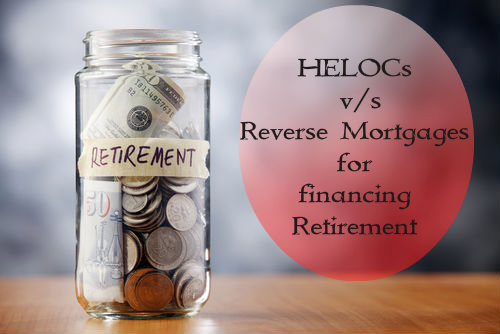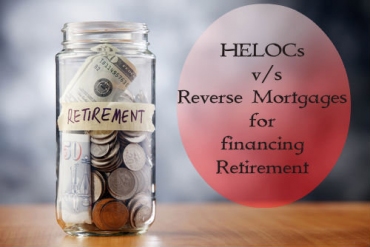Many homeowners have saved over the length of their careers to finance the purchase of their homes. At retirement, income is reduced dramatically for many. Social security, retirement benefits, and pensions are available to pay for living expenses. To make up for the shortage between lifestyle and funds, some seniors have decided to return to the workforce. Going back to work is not the only option for older Canadians to continue enjoying life without needing to downsize their homes.

Reverse Mortgaging your Home
A mortgage involves the gradual contribution of equity into your home. The reverse mortgage is a loan that is secured by the equity of your home. Funds are given to the homeowner, either as a lump sum or annuity. As with any loan, outstanding amounts accrue interest. When the loan comes due, the homeowner may have raised some funds beforehand or decide to sell the house. The financing discussed in this article allows retirees to keep their home, as opposed to selling in order to access the funds tied up in the house. This option may be particularly attractive if current house prices are depressed and the market is expected to see an upturn.
The Canadian market for reverse mortgages are not as diverse as in other areas. HomEquity Bank’s Canadian Home Income Plan is the most widely available one, and probably the most reputable option in Canada as well. There are a few features distinguishing one variety of a reversed mortgage from another. Typically, the interest rate will be higher than that of HELOC. Other lenders may advertise better rates, but be wary. Investigate these lenders before making any decisions, as they may turn out to be fraudulent. Do not risk your wealth on such scams.
What is a HELOC?
HELOC stands for Home Equity Line of Credit. It is like a credit card. You can borrow money up to a certain limit, and the amount loaned incurs interest. Repayment schedules vary. You can either repay through a balloon lump sum or an amortized schedule or regular remittances. For many banks, they only require a regular payment of monthly interest until the principal comes due. Although borrowers should have a plan on how to repay the loan, it’s possible to use proceeds from the HELOC to make the minimum payment of interest.
Interest rates for HELOCs are not the same for everyone. Many factors are considered, such as income, value of the home, other liens on the home which is used to calculate loan-to-value ratios, and credit history. The stated interest rate may be variable or fixed. In addition, banks and other lenders will add a margin on top of the rate to arrive at the total cost of lending. Although stated interest rates may be lower than that of a reverse mortgage, it is important to know that there are other fees to the customer in HELOCs.
Combining Products
It is possible to borrow initially using a HELOC, which makes the most of your good credit score. When HELOC payments become difficult to make, you can consider debt consolidation through mortgage refinance and transition into a reverse mortgage. In Canada, homeowners are responsible for the sum borrowed in a reverse mortgage. If the sale of your home does not meet all your financial obligations, you are still responsible for the outstanding debt. Do understand that refinancing is not always an available option.
Not all applicants will qualify for a HELOC. Those who will likely be able to borrow a larger amount than with a reverse mortgage. Reverse mortgages in Canada generally lend 20 to 50 percent of the house’s market value.
Evaluating your Choices
In sum, a HELOC provides the following benefits:
-
A lower interest rate, if you qualify
-
Flexible lending options, so you only spend as much as you need
-
Possibility to take out a larger loan overall
There are risks associated with the product which leads to changes in monthly payments:
-
Changes in loan rules, either regulatory or specific to the bank
-
Loss of partner
-
Variable interest rate increase
Lending as a Strategy
For some retirees, the savings accumulated over their working lives may fall under budget. Sudden expenses such as medical bills can spring up unexpected. Others weren’t able to put away as much money as they’d have liked. Furthermore, market volatility or forced early retirement may have cut into income and wealth. Whatever the case, borrowing can be a good alternative to managing finances.
Author Bio
The author of the article is Jeremy Benson. He’s been writing about latest Canadian updates ,finance, mortgage and law for the past seven years. Blogging is among one of his greatest passions. Follow him onTwitter@jeremybenson19.

